Veteran of everything from Star Wars to Jurassic Park (the latter leading to an oft-recurring internet meme based around his job title of ‘Dinosaur Supervisor’), visual-effects titan Phil Tippett has brought many astonishing sights to the screen. But now you can bring them to your living room too, via an auction with Prop Store (ending this Friday) that will sell off hundreds of iconic props, costumes and more from Tippett’s collection. We asked him to talk us through ten eye-catching items from the catalogue, and he was happy to oblige...
Star Wars (1977)
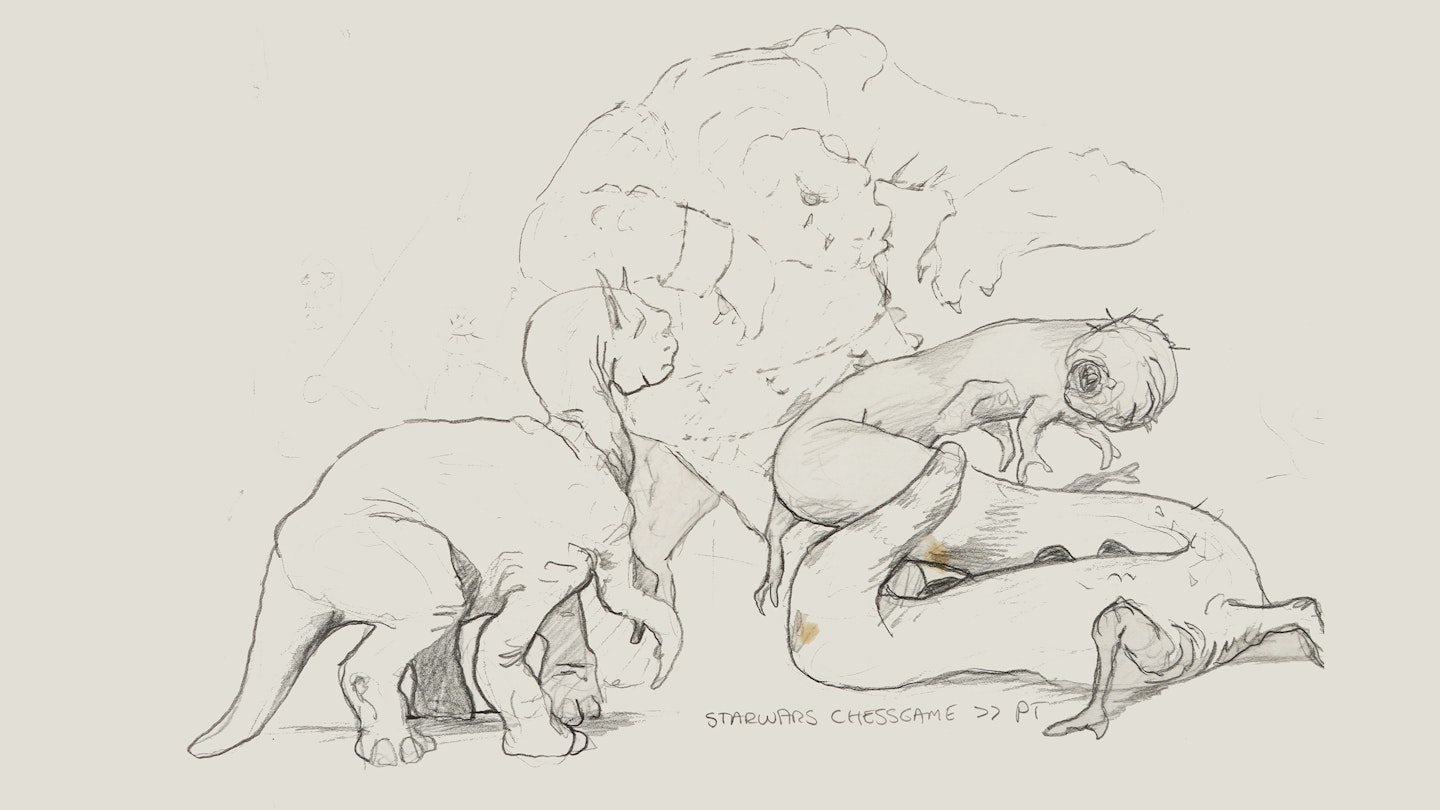
Hand-drawn chess game sketch
"George [Lucas] saw some stop-motion puppets I had made when I was a lot younger. That kinda gave him the idea to do the chessboard as a stop-motion thing. He asked my buddy Jon Berg and myself to make a bunch of space aliens. We made them very quickly, in a couple of weeks or so, then took them over to ILM. It took just two or three days at the very end of production, and I think they were actually having their wrap party at ILM as we did one of the last shots.
"There’s only one creature on the board that wasn’t made especially for Star Wars. It’s the big green guy who picks up the little hopping guy and throws him on the ground. That’s something I had made when I was a teenager. He doesn’t have a name: he was always just ‘the green guy’. And then there’s like ‘the ape guy’ and ‘the little hopping guy’. I never name things — that’s not really my job. It's the filmmaker’s, or marketing.
"When The Force Awakens came around, I got a call from Kathy Kennedy saying, ‘Hey, we want to revive the chess set and do it stop-motion. What do ya think?’ I said, ‘I’m in!’ That was an interesting process, because we had to actually reconstruct the characters. When we finished up on Star Wars Jon and I made a little chessboard plaque, put the characters on it and gave it to George as a thank you for hiring us. George kept that in his office for a number of years. For The Force Awakens we retrieved it, but the characters had been made out of a very unstable material, so you couldn’t even touch them without them falling apart. We used a process called photogrammetry where we shot the models, put them into a computer, reconstructed them in the computer and then 3D-printed them out and made moulds. It was a really elaborate process and took months and months and months."
Star Wars (1977)
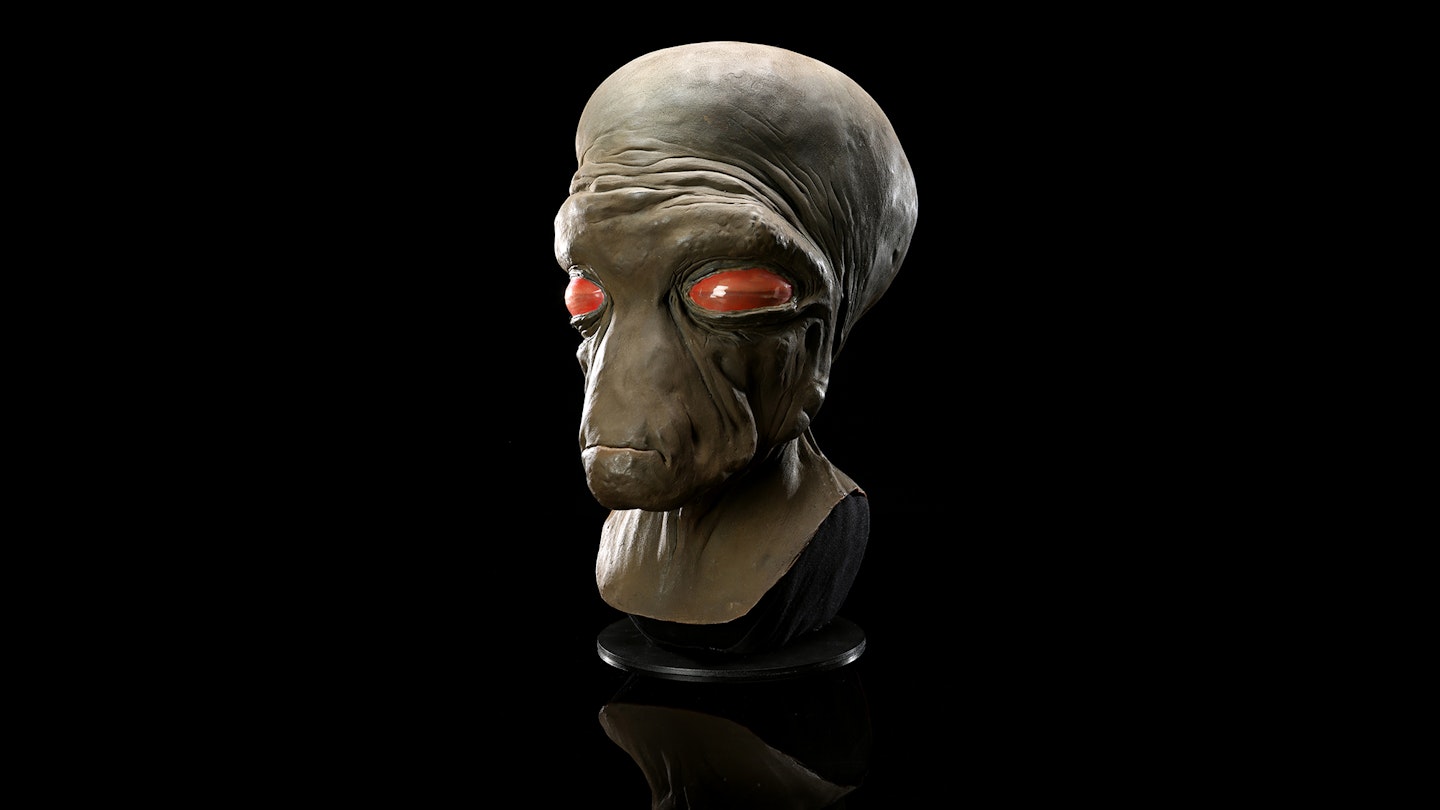
Duros latex mask
"George [Lucas] wasn’t able to complete the filming of the cantina scene in England, and I think he felt that the aliens he’d shot there were a little too Beatrix Potter — there was an alligator man, a rat man and things like that. So under Rick Baker’s guidance a bunch of us made masks very quickly and took them out and shot them on a little insert stage on La Brea Avenue. Rick himself had gone off to do The Incredible Melting Man, while we got to work on this little movie called Star Wars. So yeah, we all went down to the stage with our masks. There were people from the editorial department, the accounting department and us. And we would all put the costumes and masks on, and George would push us into a scene and say, ‘This is what I want you to do.’ We’d take a mask off, head over to another alcove and put another one on. I was one of these bubble-eyed guys. The design was based off of a concept Ron Cobb had done.
"Most of us had worked in television commercials and had found it very hard to get into feature films. Nobody was doing this kind of stuff at all. So when the opportunity came up, the first thing George did was take us into a screening room and show us the scenes as they existed. We knew that we were working on a cool project with a good filmmaker and it was going to be fun. It was all rushed and I don’t think anyone had any inkling of what was to come. When we went to the cast and crew screening in LA, everyone was blown away."
RoboCop (1987)

RoboCop costume
"I was never involved with the design of RoboCop. That was all Rob Bottin and Paul Verhoeven’s work. But we did use this as the basis for making some stop-motion puppets. There is one stop-motion shot in RoboCop and a number of them in RoboCop 2, with RoboCop on the back of Cain. We weren’t really concerned with how Peter Weller moved as RoboCop, because once RoboCop jumps on the back of Cain there’s nothing ambulatory. It’s all just fight stuff.
"We also used this live-action suit for a couple of shots where there was some kind of taser that got shot at RoboCop. It was used as a prop to attach the taser to."
Ghostbusters II (1989)
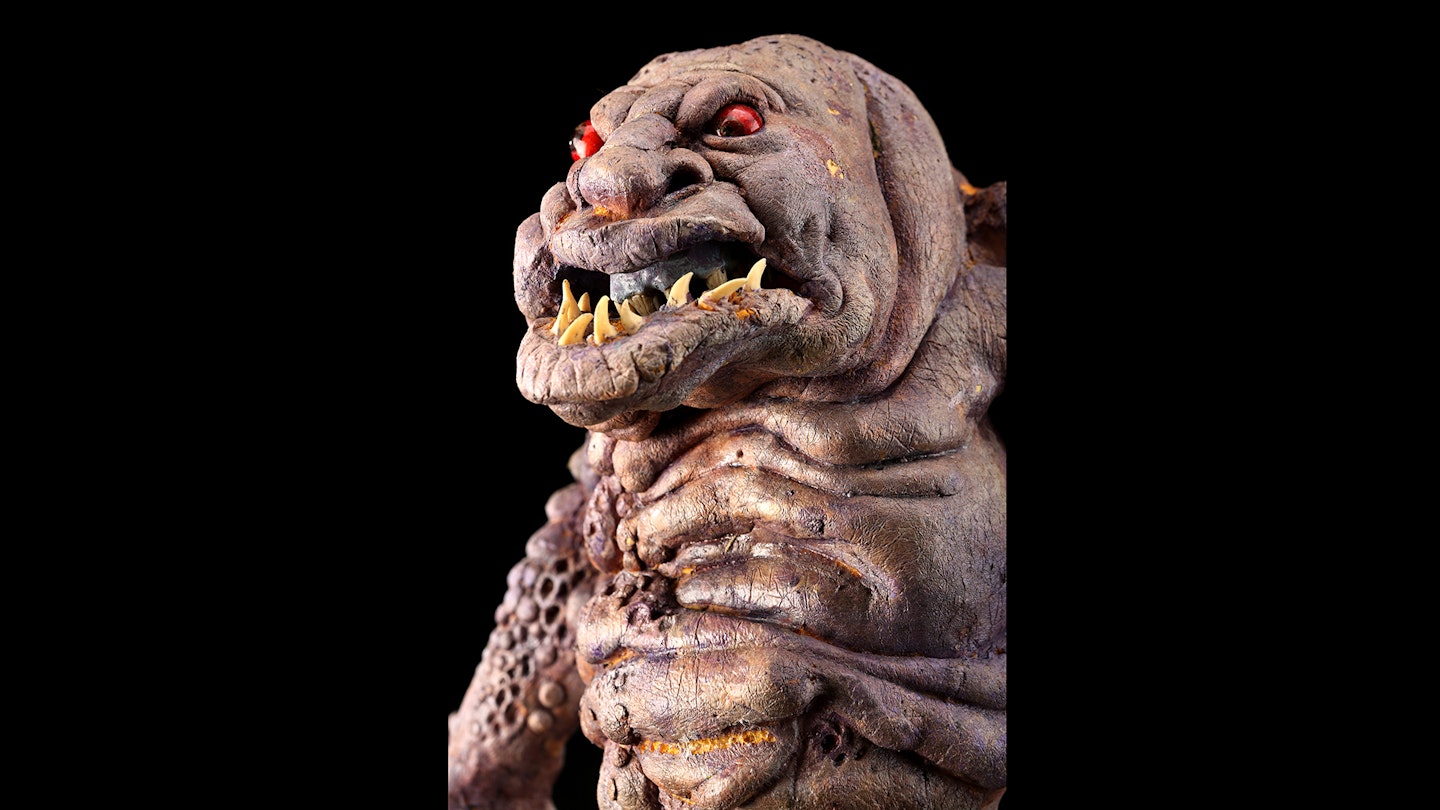
Ghost in case
"I don’t have a credit on the film, as I only did one shot. Dennis Muren was involved with that show and we’re friends. They decided to offload that one shot so that they could get all their other work done, and sent it to us. I came in very late in the game, right at the end of production. There wasn’t much time and we cobbled stuff together from existing stop-motion armatures that we had lying around. And then did a very quick sculpt and mould with foam latex casting. They pretty much left us alone. I don’t even really remember the design process, it was so quick. One of the producers came out and checked on things before we went to mould, but it all went so quickly, it just kinda made itself."
Jurassic Park (1993)

Brachiosaurus maquette
"One of the reasons Steven [Spielberg] and Kathy [Kennedy] hired me was that I have a background in paleontology. The first few versions of the script were based more closely on the [Michael] Crichton book, and the first dinosaur you meet in the book is a brontosaurus, or an apatosaurus. I said, ‘You know what? There’s another dinosaur that is much more interesting-looking: the brachiosaurus.’ They said, ‘Yeah, that looks a lot better. Let’s use that.’ It’s a lot more amazing, for the first thing that you see. Just the way that all of the bones are articulated.
"There were a few other things like that. Originally the stampede was with duck-billed dinosaurs. And I felt it would look kinda silly, so I proposed this other, ostrich-looking dinosaur that could get up to 30 or 40 miles per hour. They went with that. The Crichton book, on the page it all reads fine for the Tyrannosaur attack, but it would pick up the car like Godzilla and shake it. Steven wanted me to be on point for saying what these animals could do and couldn’t do. They were treated like animals, not monsters, and we were finding behavioural things for them that would make sense."
Dragonheart (1996)
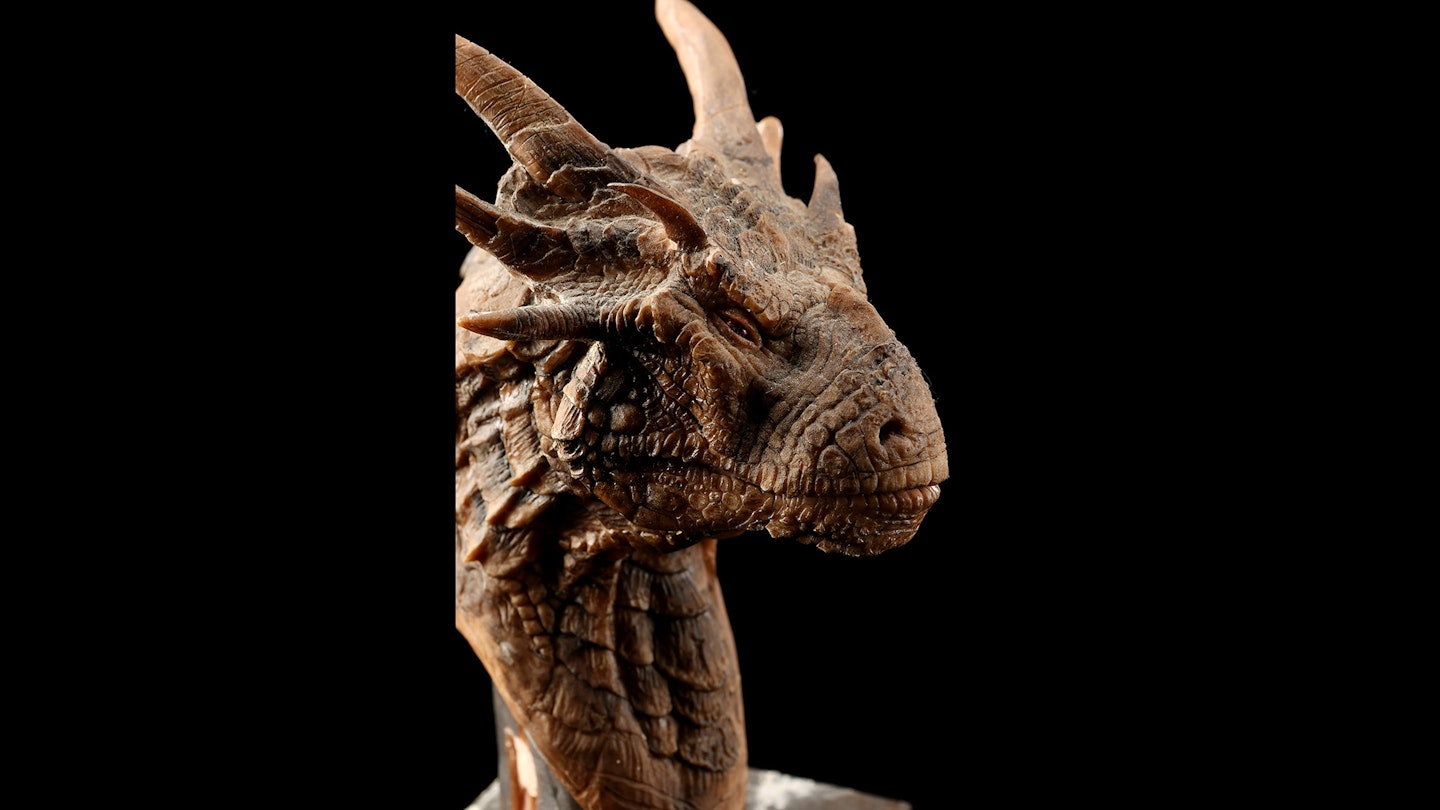
Draco maquette
"This was one of the very early design maquettes. We also made a roughly three-foot, very detailed model, which ILM used as a painting reference for their CG model.
"Draco was an anthropormorphic-ish character with a great deal of dialogue. And so the challenge was to come up with a fanciful creature that could somewhat convincingly talk. I made sure in the design of the face that it wasn’t a big crocodile snout or anything. We gave him similar facial muscles to a highland gorilla, so that the mouth could articulate vowel sounds and such. I also designed the body so that it had four legs and wings. With prehistoric animals like the pterodactyl, their wings were their front legs. But in this case I thought it was important to allow the character to use his hands to gesture while he was talking."
Gladiator (2000)

Rhino sequence storyboard
"Ridley Scott’s people sent us storyboards and asked us to run a bid estimate for this scene in the Coliseum where a gladiator fights a huge rhinoceros. We sent them a bid and they looked at it and said, ‘Well, we’re going to cut it out of the movie.’ It would have been fun. I'd never worked with Ridley Scott, so I was looking forward to that. But it never went past the budgeting stage. On Blade Runner, his producers got in touch with me as they were looking to do a stop-motion mechanical owl. The same thing happened with that — they just decided they didn't want to pay for it."
Hellboy (2004)

VFX reference head
"We used this particular bust that Rick Baker did of Ron Perlman as a reference for a computer-graphic stunt double for Hellboy. I did not supervise that film, but I’ve talked to Guillermo del Toro a number of times about collaborating on things. I did Blade 2 with him — a bunch of face-replacements on those weird guys that have their mouths split apart, and crowd scenes with lots of vampires — and I just like working with him. He’s a special filmmaker for me. For a lot of filmmakers, the creature thing is a strange territory sometimes. But Guillermo lives in that world."
Starship Troopers (1997)
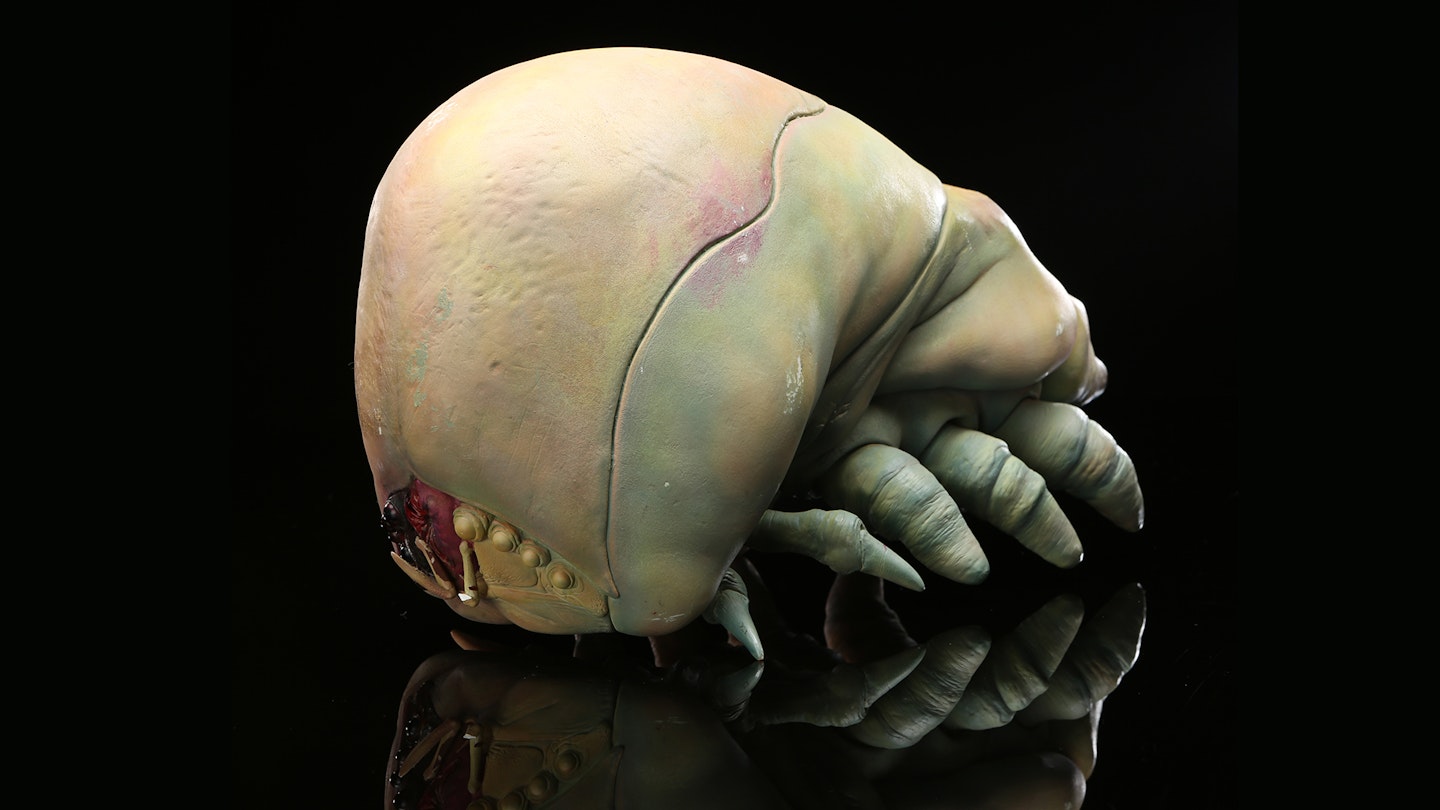
Brain bug paint test
"There were two phases of production on Starship Troopers. All the designing took place maybe a year before the shoot began. Paul [Verhoeven] went off to do Showgirls and I did something else, and then we reconvened once the money came through to do Troopers. Most of the bugs had been worked out on paper by Craig Hayes who worked with me on ED-209 and Cain on RoboCop 2.
"The intention behind all of the bugs was to create a cinematic logic for what they all were. The hopper bugs, the warrior bugs, the tanker bugs, the plasma bugs: they all have some kind of rudimentary similarity, as if they were designed for particular purposes. We thought about it in terms of war-movie functions. The warrior bugs were the infantry, the hopper bugs were the Stuka dive-bombers, and so on. For the brain bug, Paul had it in his mind that this thing was almost a Lovecraftian Cthulhu character. He wanted something that was very otherworldly but pulpy and disgusting. It had to be a grand and frightening thing. A lot of design work went into his face. Paul wanted something really disgusting-looking. In fact, the mouth of the character came to be known as the ‘poo-gina’."
Ted 2 (2015)
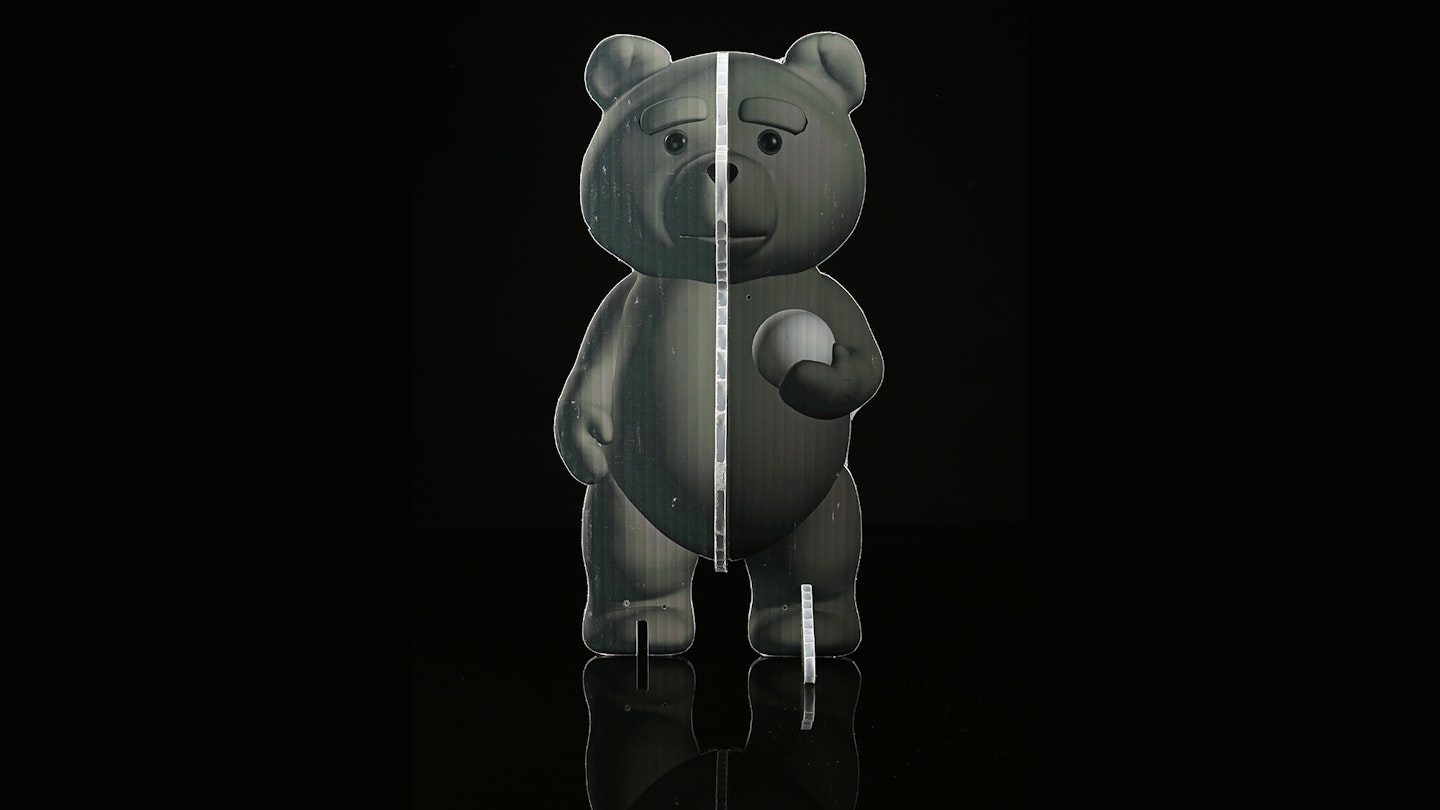
Cut-out stand-in Ted
"My studio did a big chunk of the work on Ted and Ted 2. What you’re looking at is just two pieces of cardboard-like material, used on the set as a stand-in. You could just pop it onto the set as a reference for eyelines for the actors. Or during the blocking of a shot someone would take the little cardboard cut-out and walk it through the shot so everyone knew what Ted was up to."
